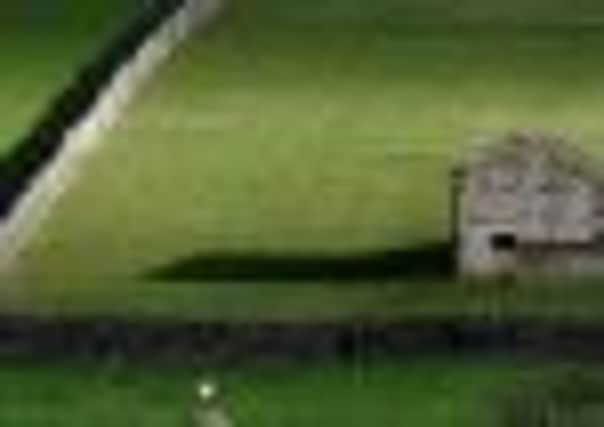Walls under attack from all angles by destructive forces


The greater part of these walls may be 200 years old and the bulk of these remain as solid as when they were built. Aside from their purpose of dividing the land into useable parcels, a good wall will also provide shelter from the elements. Although hedges provide shelter and are sometimes seen at lower altitudes, their use further up the hill is barred by the shallow acid soils and the persistent wind.
Stock-proof fences are increasingly used in the uplands but given that the average life may be 15 to 20 years, and that they provide zero shelter, the choice over walls for the long term is not favourable.
Advertisement
Hide AdAdvertisement
Hide AdFrom a landowner’s viewpoint, the disadvantage of a dry stone wall is the original cost of construction and also the cost of repairs when they tumble. But why do they tumble? A little detective work can indicate the culprit.
Apart from the obvious impact damage from vehicles, there are more subtle forces at work.
Daisy the cow may have an uncontrollable urge to scratch her neck on a favourite throughstone and Dobbin the horse is often seen rubbing his rear end on a wall head.
A group of over-exuberant bullocks racing down a slope sometimes have difficulty in finding the brakes before they crash into the wall at the bottom. Large animals like these can push and destabilise a wall over time resulting in a collapse. Sheep prefer the up and over the wall technique rather than going straight through. A dislodged topstone invites the rest of the flock to follow and before long the wall at that point is a heap of rubble on the ground. An obvious, although not always attractive way, to stop this happening is to “topwire” the wall as the sight of a strand or two of barbed wire will usually deter woolly jumpers.
Advertisement
Hide AdAdvertisement
Hide AdRabbit burrowings can also undermine the footings and lead to movement.
An old farmer recently pointed out to me an even smaller culprit he thought may be responsible – the mole. Moles dig their main runs alongside the footings of walls and then excavate “feeder” runs into the field. Livestock sheltering behind the wall, he said, will flatten the main runs forcing the mole to burrow afresh.
This cycle of events will loosen the soil allowing sideways movement of the footings due to the weight above. I have often come across walls which have ended up being four feet wide at the base and his theory of “footing spreading” seems plausible to me.
Other than four-legged offenders being responsible, two-legged vagabonds also exist. Apart from the obvious unintentional damage caused by climbing, it seems walls at the top of slopes prove to be a magnetic draw for some.
Advertisement
Hide AdAdvertisement
Hide AdThe sight of dislodged topstones rolling down a hill may provide fun for the perpetrator but hard labour for those putting them back.
Another common culprit is the tree. It seems to have been the habit a few generations ago to plant trees right next to the base of a wall. However, the saplings become mature trees over time and a strong wind causes them to shake down to the roots which loosens the earth around the wall base. I have also repaired a few walls where the actual bole of a tree has bellied the wall to the point of collapse.
Alternate freezing and thawing caused by hard frosts such as those seen last winter alter the structure of the subsoil, creating soft spots.
Often I am called to repair a wall which has “bellied in”. Usually these are constructed from larger grained soft sandstone and the fillings seem to have disappeared. They have dissolved into sand over the years. I should think that the acidity in the rain is enough to eat into such stone over time. So, the next time you are out for a walk in the hills, you can examine the miles of walls and later on you can impress your friends in the pub with your knowledge of how dilapidated walls came to end up that way.